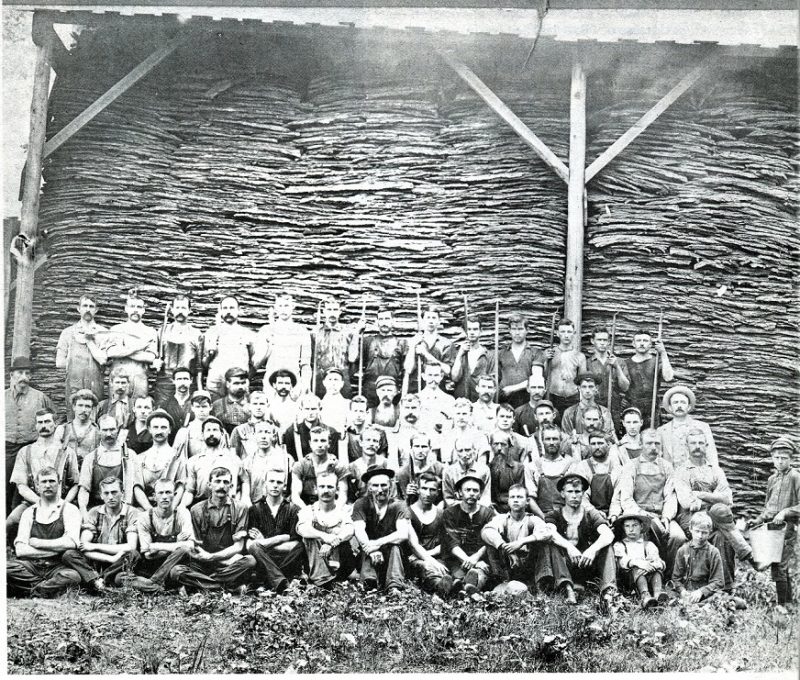Westover Borough lies in the southwestern section of Clearfield County along the waters of Chest Creek. It began in 1840 as a logging and lumbering town.
The cutting and transportation of logs formed the base of the borough’s economy, as did the spin-off businesses of surveying, general supply stores, sawmills, wooden roof shingle manufacturing, boarding houses, etc. Homesteads, churches and a school rounded out the needs of those who made Westover their home.
Typically, for Clearfield County, coal mining and an accompanying railroad line later dominated.
One of the lumbering industry’s prominent spin-off industries was the tanning of hides into leather. William Mosser began operating his tannery in Westover in 1890. After his death, in 1907, the tannery was sold and resold until finally closing in the early 1980’s.
The traditional means of the northeastern U.S. regional tanning process meant having lots of accessible hemlock tree bark available.
Hemlock bark contained high levels of tannic acid, which was used to turn hides, already cleaned and soaked in lime water, into leather.
Clearfield County’s forests were full of hemlock trees, and the lumber was considered inferior to the native white pine that was used for construction of everything from buildings to ships.
Bark peelers, employed by lumbering companies, loaded the dried local slabs of bark on to railroad cars, which shipped them to tanneries.
Hides made for lighter loads and could be shipped easier and cheaper over long distances than hemlock bark. Tanneries grew where hemlock bark was found.
Chest Creek provided a water source to make the leeched tannin liquid used to process the hides into leather. The highly acidic wastewater from a tannery was polluting and therefore damaging to local waters. The high PH levels were devastating.
The 1890’s photo shows 59 men, most appearing younger, as well as three boys who were employed at the tannery. The men in the back row are holding pole hooks. These poles were used for prying slabs of bark loose from the stacked bark stored under roof.
